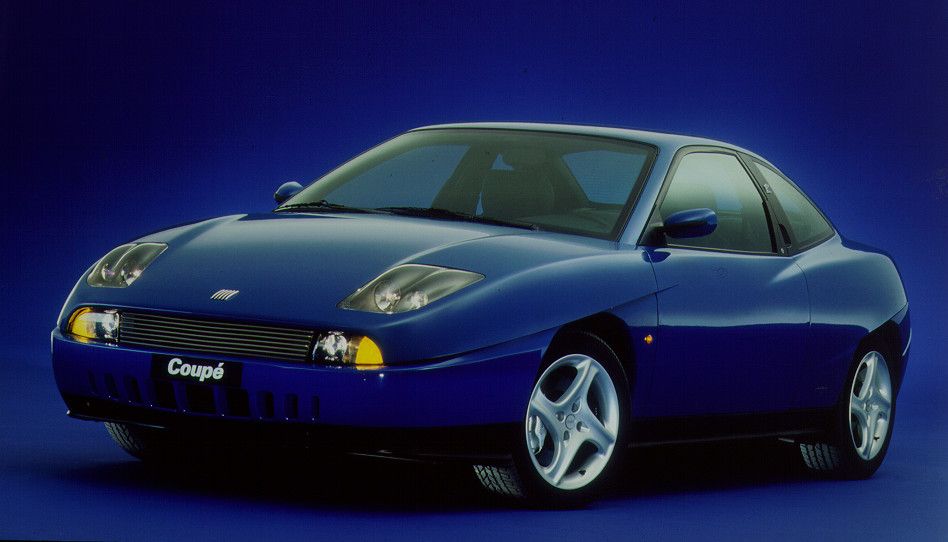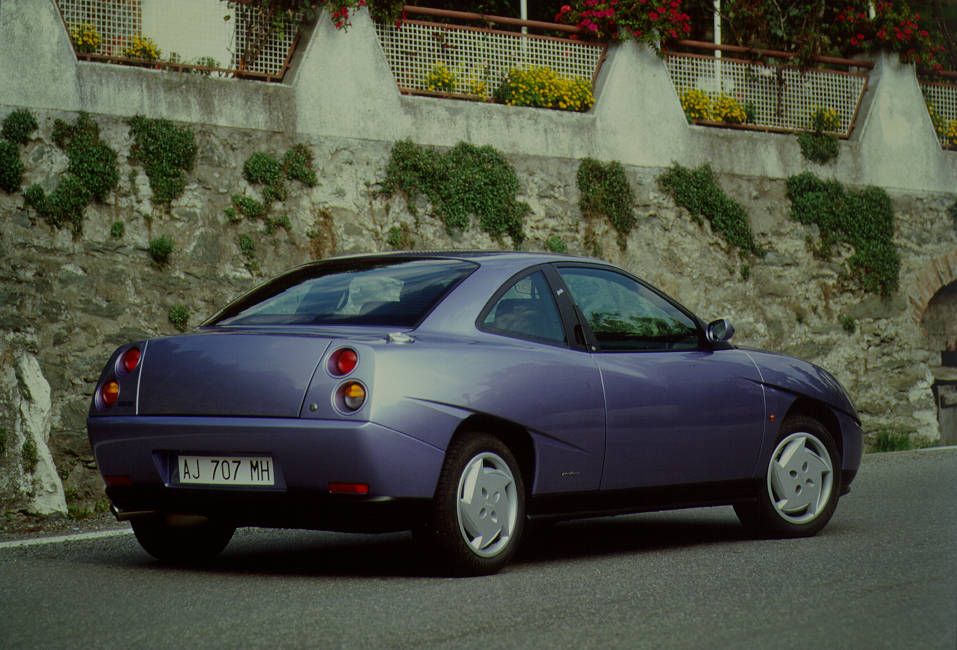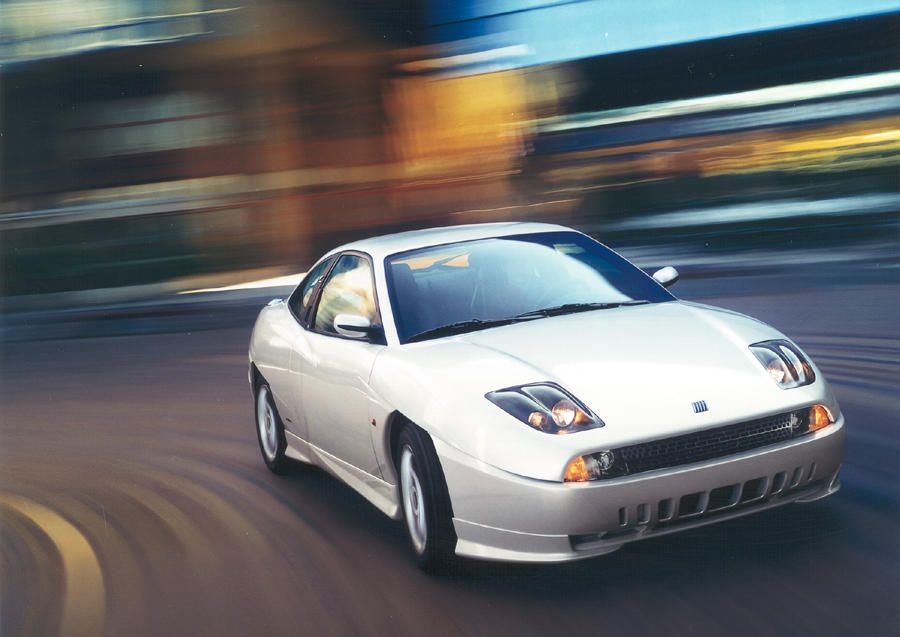"This little beauty is typical of the bijou Fiats of the 1950s - cars that look more and more appealing as prices of the more glamorous marques outstrips all financial reality. Not that this 1952 Fiat- Siata 1500 Coupé special will go "

Fiat Coupé
Has the dynamic styling of Fiat's bold Coupé guaranteed its classic status?
In the late 1980s a plan was hatched in the corridors of Turin: Fiat would return to the days when they built stylish and desirable coupés.
The plan called for the new car to be built on the Tipo floorpan, seat four and be front-wheel-drive. But therein lay a problem, as automotive designer Matteo Licata¹ explains: “The dimensions of the Tipo platform plus the required four-seat configuration wasn’t exactly an ideal basis on which to create a sexy coupé body. A marked ‘wedge’ profile with quite steeply raked roof pillars was pretty much the only way to go, but would result in a rather bulbous, heavy looking shape – definitely not what you want on a sporty car.”

But cometh the hour, cometh the man in the form of Chris Bangle. Long before he achieved equal measures of praise and notoriety for his ‘flame-surfaced’ BMWs, Bangle was Fiat Centro Stile’s point man on the Coupé project.
Bangle’s solution was to break the natural flow of the bodyshell through the use of angled ‘slashes’ that intersected with the wheel arches, thereby drawing the eye away from the Coupé’s somewhat ovoid profile. There are other clever visual touches, such as the alloy fuel filler cap, the curved headlamp covers and a grille that evokes that of the iconic Fiat Dino but, says Matteo Licata, the ‘slashes’ are its visual signature: “For me, the ‘slashes’ on the Coupé’s side are a real stroke of genius; they lighten and give dynamism to what would otherwise be a rather ungainly profile. Indeed, they worked so well that some people within Fiat considered naming the car ‘Graffio’ (Italian for ‘cut’) after its visual trademarks.”

But the Coupé isn’t just a pretty face; the Pininfarina designed interior, particularly the dash with its distinctive transverse metal strip, also stands out from the crowd.
So it looks great, but what’s it like to drive? Kirk Miller², co-proprietor of Norwich-based Italian car specialists, Italicar, provides the answer: “The Coupé is a great drive in any guise. Early 16V versions were the last Fiats powered by the WRC-dominating Lampredi twin-cam engine, and the later 20V Turbo engines offer genuine 150mph performance. The 16V versions have a frantic, point and squirt character whereas the 5 cylinder 20V models feel more like refined grand tourers. The handling is very good, too with the turbocharged models benefiting from Fiat’s clever and reliable Viscodrive limited-slip differential.”

Sounds good? It is…and then some. But how does it stack up as a classic?
For Matteo Licata the Coupé “perfectly encapsulates a moment in time when Fiat had outstanding design talent at their disposal and weren’t afraid to use it to full effect. But whether or not it’s a design classic is harder to say.”
Design classic or not, in Kirk Miller’s opinion the Coupé is on the way to becoming an established modern classic: “The Coupé was critically acclaimed, but it’s taken a while for prices to reflect that. However, decent examples are now achieving good results at classic car auctions. Most serious buyers are clamouring for untouched, low mileage examples of the 20V Turbo. These aren’t easy to find given the Coupé’s long standing appeal to modifiers and tuners, so good quality unmolested examples are likely to keep rising in value – particularly the special edition LE and Plus models, which already attract a premium. At the other end of the Coupé market, the normally aspirated four-cylinder and VIS versions are currently somewhat undervalued, but that’s unlikely to remain the case for too much longer.”
¹Matteo Licata is an automotive designer with EDAG Engineering. Currently based in Barcelona, he is highly knowledgeable about both modern and classic cars, especially those from his native Italy.
²Kirk Miller is co-proprietor (with his brother, Luke) of Italicar in Norwich. He’s been passionate about Italian cars since childhood – his father was dealer principal of a local Fiat franchise – and has owned, driven, bought and sold all manner of modern and classic Italian metal.
CLICK TO ENLARGE















